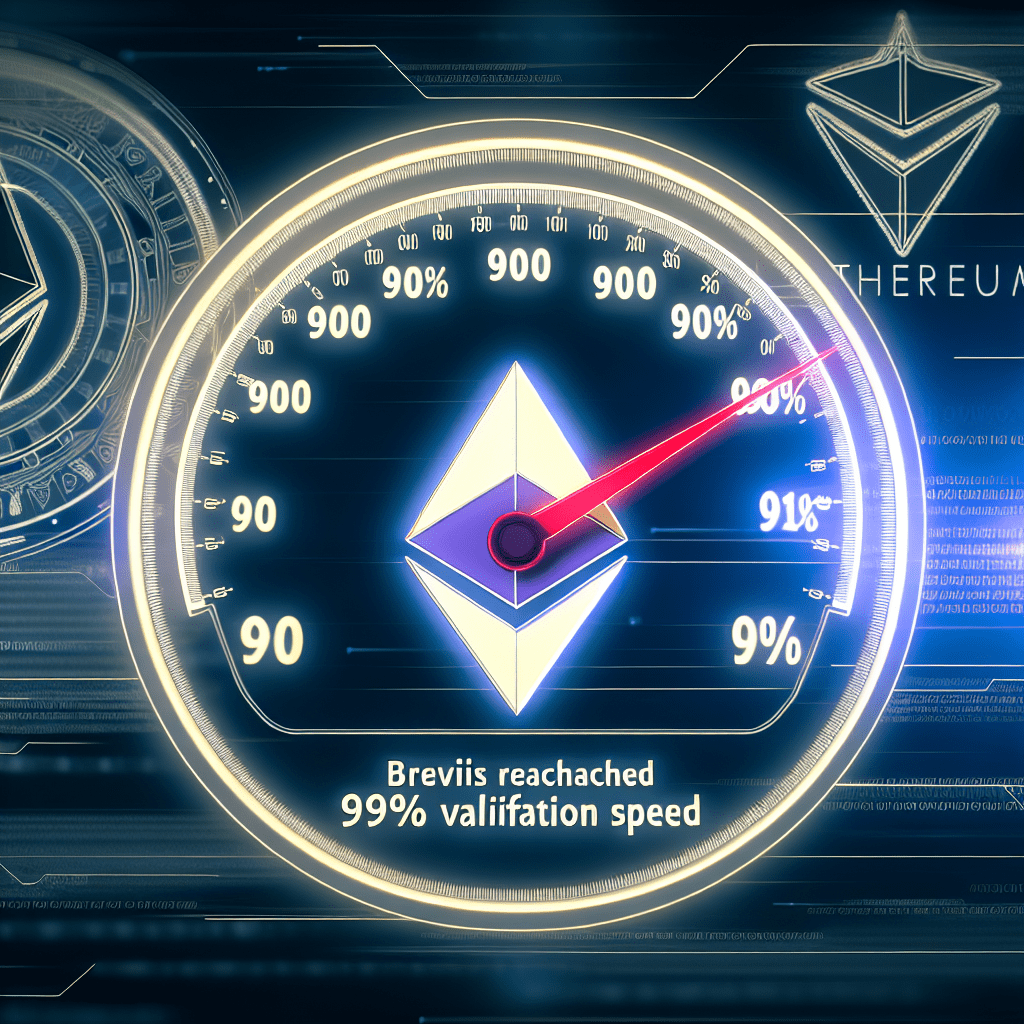
Brevis is making significant strides towards the Ethereum Foundation’s ultimate proving objectives, showcasing an impressive 96.8% real-time coverage, just shy of the sub-ten-second goal that would revolutionize base-layer security.
Summary
- Brevis’s Pico Prism zkVM has attained 99.6% proving coverage for Ethereum blocks in under 12 seconds, with 96.8% verified in what is considered real time, under 10 seconds.
- This achievement halves GPU hardware costs and positions Brevis within 2.2% of the Ethereum Foundation’s 2025 proving targets.
- By improving verification through cryptographic proofs, Brevis addresses Ethereum’s redundancy issue, allowing for faster, more cost-effective, and secure base-layer validation.
A press release shared with crypto.news on Oct. 15 revealed that Brevis’s Pico Prism zkVM is the first to reach 99.6% proving coverage for current Ethereum blocks in under 12 seconds, with 96.8% of blocks successfully proven within an industry-standard real time of under 10 seconds.
This performance, benchmarked against the mainnet’s existing 45 million gas limit, comes with a 50% reduction in the GPU hardware costs previously necessary for such operations.
Brevis CEO and co-founder Mo Dong noted that the infrastructure now successfully accommodates “what Ethereum is actually producing today,” marking a pivotal shift from research to a production-ready platform.
“The numbers speak for themselves,” Mo Dong stated. “We’ve built infrastructure that can handle what Ethereum is actually producing today. This is faster performance leading to economic efficiency that makes real-time proving viable for production deployment.”
A step toward Ethereum’s zero-knowledge future
Brevis presents this performance enhancement as a direct solution to one of Ethereum’s core inefficiencies: the significant computational redundancy present in its consensus mechanism.
Currently, every transaction on platforms such as Uniswap is re-executed by over 800,000 global validators, a structure that ensures security at the expense of substantial waste. This redundancy significantly limits block gas limits since validators require cost-effective hardware to keep up with re-execution demands.
Pico Prism demonstrates that verification can be scaled using cryptographic proofs rather than computational brute force. In this framework, a single prover creates a mathematical proof of a block’s validity, enabling the entire network to verify that proof within milliseconds, sidestepping the need for redundant execution.
From Brevis’s standpoint, this performance achievement highlights a clearer trajectory towards full Ethereum Layer-1 zkEVM integration. The Ethereum Foundation’s goals set for July 2025 include ambitious benchmarks: 99% coverage, sub-10-second proving, and affordable hardware suitable for home-level validation.
With only a 2.2% gap to those metrics, Brevis is positioning Pico Prism as a nearly-ready layer for Ethereum’s foundational protocol. This shift leads to an ecosystem where validators, developers, and users all gain from enhanced liveness and better censorship resistance.
According to the statement, developers are already utilizing this infrastructure to create a new breed of dApps. Major protocols such as PancakeSwap, Usual, and Frax are incorporating Brevis’s proving technology for advanced trading hooks, trustless reward distribution, and cross-chain verification.
These applications provide a live preview of a post-scaling Ethereum, allowing developers to harness effectively infinite off-chain computing power while retaining the robust security guarantees of Ethereum L1.

